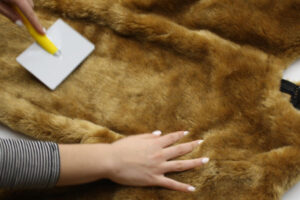Three T’s of Children: Section Five
One of the most important things you must learn as a mascot is how to approach different types of children.
The first ‘T’ stands for ‘Terrific Children’. These children love mascots. They’re excited, and they treat you with respect. Often time, these children range from four to ten years old. Follow all the basic rules and guidelines for performing and these children will continue to be your biggest fans.
The second ‘T’ stands for ‘Terrified Children’. These are the children who may scream, cry, or run away when they see mascots. Most of the time, these children are younger in age. In order to deal with these kinds of children, you must follow these steps:
- Mark your distance. Take one or many steps back to calm the child.
- Drop your level. Mascots are tall, so it’s important to get down on a knee or to completely sit down so you’re less intimidating.
- Play games. Waving or playing ‘peek-a-boo’ can be helpful tools when trying to win over a terrified child.
- Look away. Often times, children will be scared if a mascot keeps staring at them. Looking away can help you seem less creepy.
- Keep smiling. This means you need to maintain a positive body attitude and posture.
- Offer your hand. Children may be more accepting if they realize you are soft and friendly.
- Interact with parents. High fiving or hugging parents can make a terrified child realize that a mascot is nice, not scary.
- Walk away. Some kids may never get over their fear of mascots. If you’ve tried the other steps without any success, then it’s simply time to leave the child alone.
The third ‘T’ stands for ‘Terrifying Children. These are the children that want to chase, taunt, poke, hit, and with mascots. Typically, terrifying children are a bit older. Similar to the terrified children, you should deal with terrifying children by following a set of steps:
- Calmly diffuse. Be playful and try to get the child to divert their attention from harassing you to interacting with you.
- Give the ‘hearty handshake’. This is a handshake where you should apply enough pressure to let the kid know that they should stop, but not too much pressure to cause any harm.
- If a child still won’t stop, it’s time to signal for help. Let your helper intervene to distract the child.
Simply walk away. Interacting with children can be one of the toughest parts of being a mascot, but it can also be the most rewarding and fun. You’ll encounter all three types of children, but always be sure to follow these steps and tips.








